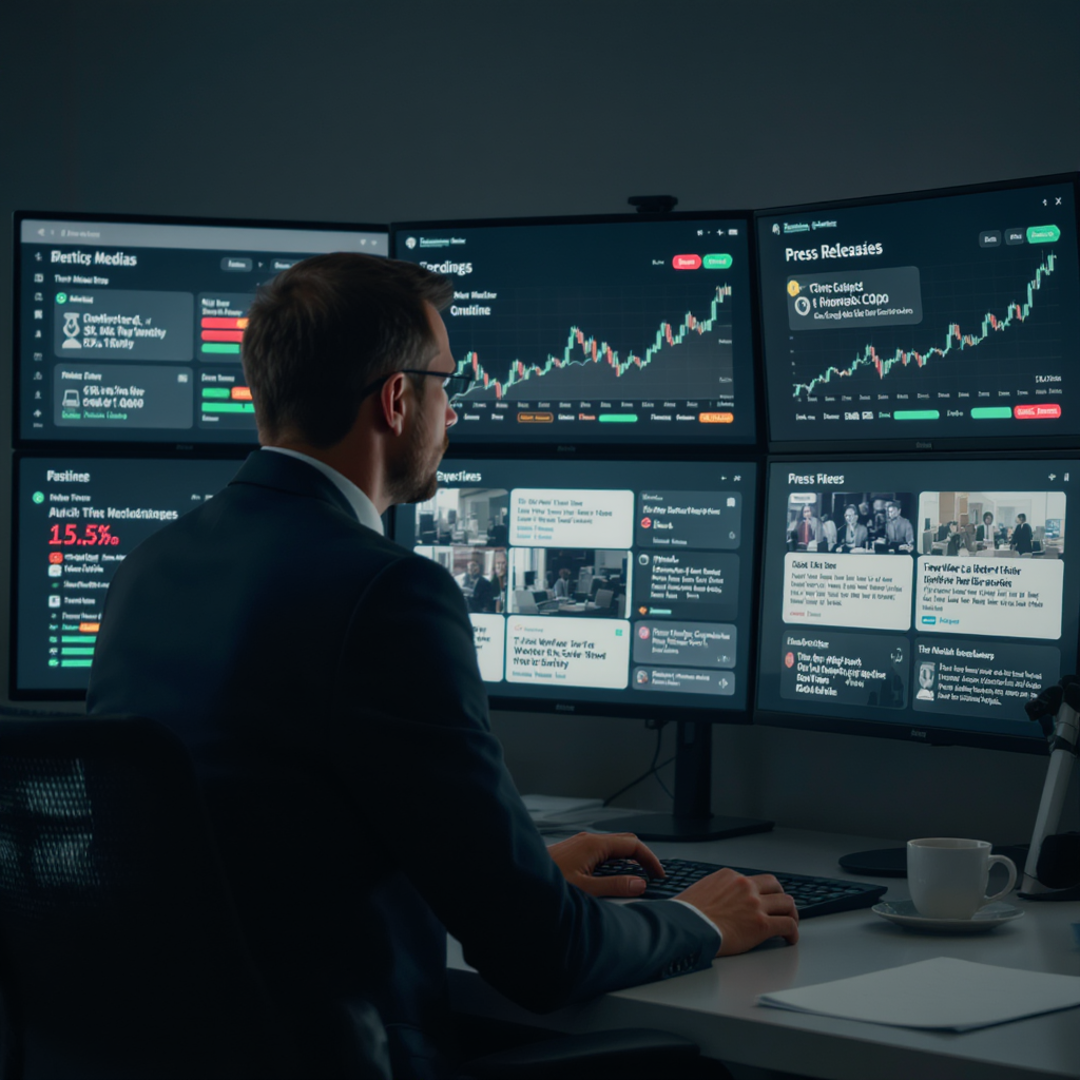As PR professionals, tracking and responding to media coverage effectively is crucial for managing brand reputation, identifying potential crises, and shaping public perception. This article explores the critical importance of media monitoring in PR and provides actionable tips for PR teams to make the most of it. Discover how to choose the right tools, set up comprehensive tracking, analyze coverage effectively, and craft strategic responses to both positive and negative mentions. Learn best practices for leveraging media insights to support your PR strategy and strengthen your brand's position
Summary:
-
Understanding the importance of media monitoring for PR.
-
Effective media monitoring techniques for PR professionals.
-
Crafting strategic responses to media coverage.
Understanding the importance of media monitoring for PR
Key benefits of media monitoring
Media monitoring offers several key benefits for PR professionals:
-
Real time brand awareness: Tracking media mentions allows you to gauge brand perception and sentiment in real time, enabling swift responses to emerging issues.
-
Competitive intelligence: Monitoring competitors' media presence provides valuable insights into their strategies, successes, and weaknesses that can inform your own positioning.
-
Campaign effectiveness measurement: Analyzing media coverage and engagement metrics helps quantify the impact and ROI of your PR campaigns for reporting and optimization.
How media monitoring supports PR strategy
Media monitoring provides valuable insights that can inform and strengthen PR strategy in several key ways:
Real-time awareness of brand perception: By tracking media mentions across online news, print, broadcast, and social media channels, PR teams gain a comprehensive, up-to-date understanding of public sentiment towards their brand. This enables them to gauge the effectiveness of messaging, identify potential issues early, and adapt strategies as needed.
Competitive intelligence: Monitoring competitors media presence reveals their strengths, weaknesses, and positioning. These insights help PR professionals differentiate their brand, capitalize on whitespace opportunities, and stay ahead of industry narratives.
Identification of influencers and journalists: Media monitoring uncovers the reporters, publications, and thought leaders that are most engaged with topics relevant to the brand. PR teams can then cultivate relationships with these key players to earn valuable media coverage and shape important conversations.
Measurement of PR impact: Tracking metrics like media mentions, reach, and sentiment over time allows PR to quantify the results of their efforts. This data is crucial for demonstrating the value of PR to stakeholders, justifying budgets, and continually refining strategies based on what works.

Choosing the right media monitoring tools
Selecting the appropriate media monitoring tools is crucial for PR professionals to effectively track coverage, measure campaign impact, and manage brand reputation. However, with the multitude of options available, it can be challenging to identify the right solution for your specific needs.
The key is to first clearly define your PR goals and requirements. Are you primarily focused on tracking online news and social media mentions? Do you need comprehensive coverage across print, broadcast, and paywalled sources? Identifying your top priorities will help narrow down the options.
It's also important to consider factors like ease of use, data accuracy, and the ability to provide actionable insights. Look for tools that offer sentiment analysis, customizable alerts, and intuitive reporting dashboards. Some of the most popular and comprehensive media monitoring platforms include Meltwater, Cision, and Muck Rack, which cover a wide range of sources and offer robust analytics.
Ultimately, the right media monitoring tool is the one that aligns with your unique PR objectives, integrates seamlessly into your workflow, and provides the insights you need to make informed strategic decisions.
Setting up comprehensive tracking
Establishing thorough media monitoring across multiple channels is crucial for staying on top of brand perception and industry trends. The key is to cast a wide net while also being strategic in your approach.
Start by identifying the most important news outlets, industry publications, and social media platforms for your brand. Set up alerts for your company name, products, executives, and other key terms. Tools like Google Alerts, Mention, and Hootsuite allow you to track web and social mentions.
For traditional media monitoring, services like Cision and Meltwater provide comprehensive coverage across online news, print, TV, and radio. Many also offer social listening and analytics to help gauge sentiment.
When choosing keywords, think like your audience. Use the terminology they would use to discuss your brand or industry. Incorporate common misspellings and abbreviations. And don't forget to monitor your competitors and industry buzzwords to stay ahead of trends.
Finally, ensure your monitoring is continuous and someone is responsible for reviewing and sharing relevant mentions internally. Consistent tracking allows you to spot opportunities, manage crises, and make data-driven decisions for your communications strategy.
Analyzing media coverage effectively
Effective analysis of media coverage involves several key techniques:
-
Sentiment analysis: Use tools to automatically determine if mentions are positive, negative or neutral in tone. This provides a quick gauge of the overall perception of your brand.
-
Identifying trends: Look for patterns and commonalities across coverage. Are certain messages resonating more than others? Are particular publications or journalists covering you frequently? Spotting trends allows you to build on what's working.
-
Comparing to competitors: Benchmark your media coverage against key competitors. Analyze metrics like mention volume, reach, and sentiment to see how you stack up and identify whitespace opportunities.
-
Tracking message pull-through: Evaluate if your key messages are being picked up in coverage. This reveals how effectively you're shaping the narrative around your brand.
-
Measuring impact: Go beyond vanity metrics to gauge the true impact of coverage on your business goals, such as website traffic, sales leads or shift in brand perception. Tie media analysis to tangible outcomes.
Crafting strategic responses to media coverage
Managing negative coverage
Negative media coverage can be damaging to a brand's reputation if not addressed promptly and effectively. The first step is to assess the situation objectively to determine the best response. In some cases, it may be appropriate to refute inaccurate claims with facts.
However, a combative approach can sometimes backfire and draw more attention to the negative story. An alternative is to acknowledge legitimate concerns, take responsibility where appropriate, and focus on steps being taken to resolve the issues.
The most effective approach is often a combination of the two - firmly correcting misinformation while also demonstrating responsiveness to valid criticism. Transparency, consistency, and a focus on solutions can help mitigate the impact of negative coverage and even turn the narrative in a more positive direction over time. A well-prepared crisis communication plan is key to executing this balanced strategy swiftly when negative press hits.



 8 min
8 min

 8 min
8 min

 6 min
6 min


 On 26 August, 2025
On 26 August, 2025